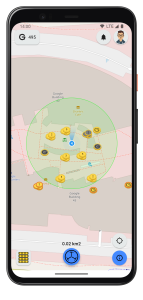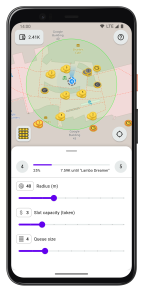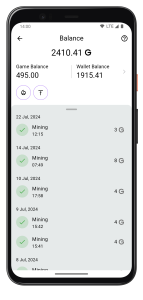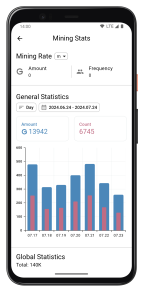The Problem “If your business is not on the internet, then your business does not exist.”
Due to active digitalization, the advertising sector has significantly transformed, ensuring online presence through computers and mobile devices. Although radio and television advertising campaigns have expanded their audience, they have yet to introduce significant innovations in consumer interaction methods. Traditional advertising methods such as outdoor billboards, radio, and television are losing effectiveness due to increased attention to digital channels, which offer interactivity and instant access to information.
However, digital advertising faces the problem of untimely display when advertising materials may appear inappropriate, such as during an online game or watching a series, causing user dissatisfaction. In contrast, outdoor advertising can be more appropriate as it meets a potential client in real time and space, for example, by offering a promotion when passing by a store.
Outdoor advertising has its drawbacks. What if it’s not this intersection but the next one? Knowing about promotions there, you might be okay with walking or driving an extra block. Outdoor advertising needs more interactivity. The latest but outdated developments include the introduction of QR code systems and the unsuccessful attempts to implement augmented reality (AR). Why, having mobile phones, are you still handed paper products by a promoter?
Difficulties in Measuring Effectiveness.
One of the main problems of outdoor advertising is the need for more accurately measuring its impact on the consumer. Different from digital advertising, which can precisely track user interaction with an advertising message, this is much harder to do with outdoor advertising.
Environmental Issue.
The production and disposal of advertising materials, especially paper and plastic, negatively impact the environment. With growing environmental awareness, this aspect may play an increasingly important role.
Modern cities are oversaturated with advertising messages, creating information noise. Billboards, posters, and signs all vie for the passerby’s attention, reducing the effectiveness of individual advertising mediums. In such an environment, it is difficult to stand out and attract consumer attention, especially with significant spending on creativity and location.
Sadly, most fail to experience the "big game" without making a loud statement.
- A delicious coffee will only be drunk by neighbors.
- An excellent burger will only be eaten by relatives.
- Only friends will come to the beauty salon.
Hundreds of thousands of such examples exist in every country and city. Dreams, successes, and grand goals crash or turn into everyday routines.
But it can be different. There is an unprecedented opportunity to quickly, easily, and efficiently advertise your "point" online without having a website or page at the initial stage. We want to help such budding entrepreneurs by creating a new platform with quality, understandable, and quickly adjustable online advertising. Most importantly, we want to make it mutually beneficial for both the advertiser and the consumer.
In a fiercely competitive environment and market struggle, advertising has evolved and become more intrusive, aggressive, and sometimes toxic. For many, the word "advertising" evokes negative emotions. Let’s try to offer a different approach.
Solutions and Product “Advertising” = “Commercial Communication.”
First, let’s return to the essence of what lies behind the concept of "advertising" – it is communication between two parties, one of which has something to offer, and the other has a need and interest in the delivered product, service, information, etc. Before it became intrusive and a one-sided game, it was regular communication. Since it mainly involves trade or exchange, it is commercial communication. Since we are addressing this problem, let’s start with ourselves. Let’s try to remove the word "advertising" from our text and, with our solution, return to this concept of its former eco-friendliness and equality.
So, we propose a model where funding for traditional commercial communication channels is redirected to reward consumers for their direct attention to brand messages. This will increase consumer interest in commercial messages and allow companies and agencies to focus on creating more creative and, thus, more compelling content. This strengthens the interaction between brands and their audience, fostering the development of innovative approaches in the paid attention industry. The level of interactivity in such communications can be brought to an entirely new level.
Let’s summarize what modern commercial communications should be:
- Timely: Commercial messages should reach the audience at the most appropriate moment. This could be:
- A specific time of day.
- A particular event.
- Product or service seasonality.
- The moment of making a purchase decision.
- Location-based: Using user location data to show relevant messages:
- Notifications about nearby stores and cafes.
- Advertising of events and services in immediate proximity.
- Interactive: Engaging consumers in the communication process:
- Interactive videos, games, surveys, quizzes.
- Social networks and apps that allow commenting, sharing, and participating in content creation.
- Targeted: Achieving specific marketing goals by addressing the target audience:
- Messages based on user preferences and behavior data.
- Personalized offers matching interests and needs.
- Rewarding: Offering the user a reward for attention to commercial content:
- Watching videos, installing apps, participating in surveys
- Rewards include virtual currencies, bonuses, discounts, and coupons for goods and services.
Rewarding users is the cornerstone for improving the quality of commercial communications in the specified aspects. This approach significantly enhances interaction interactivity. Thanks to rewards, users actively participate in surveys and quizzes, are more willing to comment, and even contribute to creating commercial content. Messages that users choose to view in exchange for a reward are perceived as more relevant. Rewards also motivate users to share their location, simplifying the creation of location-oriented campaigns. Additionally, users are ready to share their preferences, aiding the development of targeted commercial communications.
Thus, rewarding users improves engagement and interactivity and allows brands to create more effective and relevant commercial messages tailored to audience needs and behavior.
Instead of spending money on traditional marketing channels, direct them towards directly rewarding consumers for their attention to your messages. This will increase your commercial communication (advertising) interest and allow you to create more creative and compelling content.
New Interactive Commercial Communication with Consumer Rewards
Problem: Traditional advertising channels
- High costs for traditional advertising channels
- Low effectiveness and consumer engagement
Solution: Direct consumer rewards
- Redirecting advertising budgets to reward consumers
- Direct rewards for attention to brand messages
Advantages: Increased interest and effectiveness
- Increased consumer engagement
- Opportunity to create more creative and compelling content
Result: Strengthening interaction
- More vital interaction between brands and their audience
- Development of innovative approaches in the paid attention industry
Conclusion: A new level of interactivity
- Increasing the level of communication interactivity
- Achieving new heights in advertising campaigns
The benefits of rewarded commercial communications are apparent, and we will only dwell on them briefly. Let’s move on to the scheme in which we plan to implement all of this.
We propose a solution where the user is rewarded with tokens for their activity. In the initial phase, we plan to distribute tokens among all participants. Users who show the most activity will be rewarded with more tokens. We propose a competitive distribution scheme. In this case, the user interacting more actively with the application receives a greater reward than the more passive participants. The activity can be varied:
- Watching commercial videos: One of the most common ways to reward users, especially in mobile games and apps where users receive in-game currency, bonuses, or advantages for watching video content.
- Participating in surveys and studies: Users can receive rewards for filling out questionnaires, participating in marketing studies and surveys, and providing valuable feedback and data.
- Registering on websites or subscribing to services: Offering rewards for registering on new platforms, subscribing to newsletters, or trial versions of services.
- Creating content and participating in contests: Users can be rewarded for creating quality content, participating in contests, or completing creative tasks promoting the brand.
- Posting reviews and recommendations: Some companies reward for writing reviews about products or services and for recommendations that help attract new customers.
- Social activity: Includes rewards for spreading information about a product or service on social networks, attracting new users through referral programs, and other types of social interaction.
Behavioral activity: Rewards are given for various types of behavioral activity, such as spending a long time in the app or completing specific actions.





